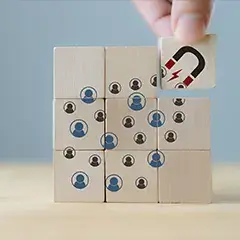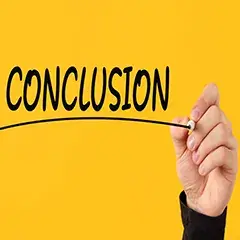
Your Trade Show Is Over. What’s Next? A Guide to Evaluating the Success of Your Exhibit
“Leads. It’s all about the leads.” – common trade show industry idiom
“It’s all about accountability” – Exponents
You’re settling back in after a long trade show. Time to gather business cards, chicken-scratch notes, and badge scanner data so your team can start cold calling. No! No! No! There is a better way, and this guide will show it.
At some point, management is going to evaluate the effectiveness of the trade show program. There is no better way to evaluate than with numbers (metrics). The sales team needs to convert leads.
To convert leads, the sales team needs to be given quality leads by the marketing team. For the marketing team to qualify leads, it needs the necessary tools and adequate input from the sales team. It’s a very holistic process and highly collaborative.
The good news: each internal team can win at this trade show game. Realistically though, each step detailed below needs to be done right. For each step to be done right, everyone needs to contribute. In other words, this process requires high accountability from everyone involved.
 Step One: Get Leads
Step One: Get Leads
This guide assumes the main reason you are exhibiting is to gain leads. There are several different ways to collect information on your leads. Easy methods include collecting business cards and scanning badges.
The problem with these methods is that you rarely have any contextual notes on the lead to follow up with them after the show.
A better approach is to have a series of questions to ask booth visitors. Their answers and the notes you take determine how you grade them as a lead. You can use a clipboard, tablet, or any other method that works for you. We recommend choosing one that gives you the best chance of taking good notes.
The questions should be written by the marketing team with direct input from the sales team. The sales team will know the type of questions necessary to qualify leads for your company’s products and services. At the show, consider incentivizing booth staff and booth attendee for completing the questionnaire.
Not all attendees will want to talk to booth staff, let alone answer a bunch of questions. That is ok – have a method of passively collecting information. Consider having kiosk stations that display videos, presentations, or games that creatively present your brand. Basic contact information can be obtained at the end of the interaction.
Step Two: Organize Leads
Based on the answers to the questions, you can score leads as hot, warm, or cold. Ideally, the marketing team loads the leads into a Customer Relationship Management (CRM) system with these scores.
There are many benefits to having a CRM – in this case, it’s useful to segment leads and prep them for the sales team.
Consider developing a specific message for cold leads and a completely different message for warm leads. Perhaps the sales team only gets access to hot leads at this stage, and the marketing team continues to nurture cold leads until they feel they are warm or hot.
 Step Three: Follow Up with Leads
Step Three: Follow Up with Leads
The scoring process helps prioritize the most valuable leads. Ideally, you develop a way to follow up with each type of lead, even ones that casually interacted with your brand at a kiosk or accepted a badge scan.
Perhaps these colder leads get an automated message that you have set up to trigger when specific information is collected. This is where you can leverage automation technology.
Until a lead is considered qualified, it is team marketing’s job to begin nurturing them with content. Both teams should vet the parameters for becoming qualified in a round of collaboration. Perhaps it is when a lead requests a quote or a demo. Once a lead becomes qualified, it’s time to pass them to sales.
The more qualified a lead is, the more motivated a sales team member will be to follow up with them. For example, if you collect 100 leads and only 10 are truly qualified, you are asking for 90 cold calls to be made.
This is likely a waste of time, and the sales team might not be motivated to follow up on all leads. If you deliver quality leads, they will be more likely to follow up and trust in the process moving forward.
Step Four: Measure Leads
If the value of the exhibition program is ever called into question, you will quickly be able to give data if you have done a good job tracking your leads in your CRM. You can also legitimately pass some of the blame to where it belongs if leads are not being converted.
Here are some key metrics that should be developed to measure the Return on Investment (ROI).
Cost Per Lead (CPL)
It’s important to the sales team to know how much it costs to generate a lead. An understanding of investment inspires accountability. If lead generation is the sole reason you are exhibiting, divide the total cost of exhibiting at an event by the total number of leads collected.
If lead generation is only 60 percent of your objectives, you will divide your total amount spent by 60% and then divide by the total amount of leads to determine the cost per lead.
Example: if you spent $20,000 to exhibit at a show and you generated 200 leads, there is a $100 cost per lead. If you give your sales team 10 hot leads, that is a marketing investment of $1000.
Close Rate (CR)
You’ve worked hard to generate quality leads. What percentage of those leads result in a purchase? A close rate calculates that for you. Knowing your CR is important. One, it allows you to evaluate the effectiveness of your lead generation tactics.
Two, it can help you prioritize future shows as you can estimate the number of sales likely to come from the number of leads collected. To calculate, divide the total number of leads that converted by the total number of leads and then multiply by 100.
Example: if 50 leads converted from a pool of 250 leads generated, your CR would be (50/250) x 100 = 20%
Return on Investment (ROI)
This metric will likely always be the most important. It is not challenging to calculate, but many factors affect it. To calculate, subtract the total cost of show investment from total show revenue, then divide by the total cost of show investment and then multiply by 100.
Example: if show generated $150,000 in sales and cost $50,000 to put on, your ROI would be ($150k-$50k)/$50k = 2. 2 multiplied by 100 = 200%.
Any percentage of more than 100 means a positive gain for the company. Anything less than 100 would indicate a net loss. Consistency is very important when calculating ROI.
We recommend calculating show ROI at the same point after every show, such as 2 months later. Please note that if your company has a long sales cycle, your ROI calculation might be a bit skewed.

Conclusion
We hope this guide helps you develop a game plan for collecting, categorizing, and following up with leads. It’s a process that requires collaborating from several internal departments, namely sales and marketing.
The teams must work together to write the necessary questions to ask leads at the show. The answers to these questions will help the marketing team give the sales team the best leads.
Working with the best leads gives the sales team the best shot at converting. Use the metrics mentioned above to calculate the value of your trade shows, especially if your program’s effectiveness is ever questioned.
